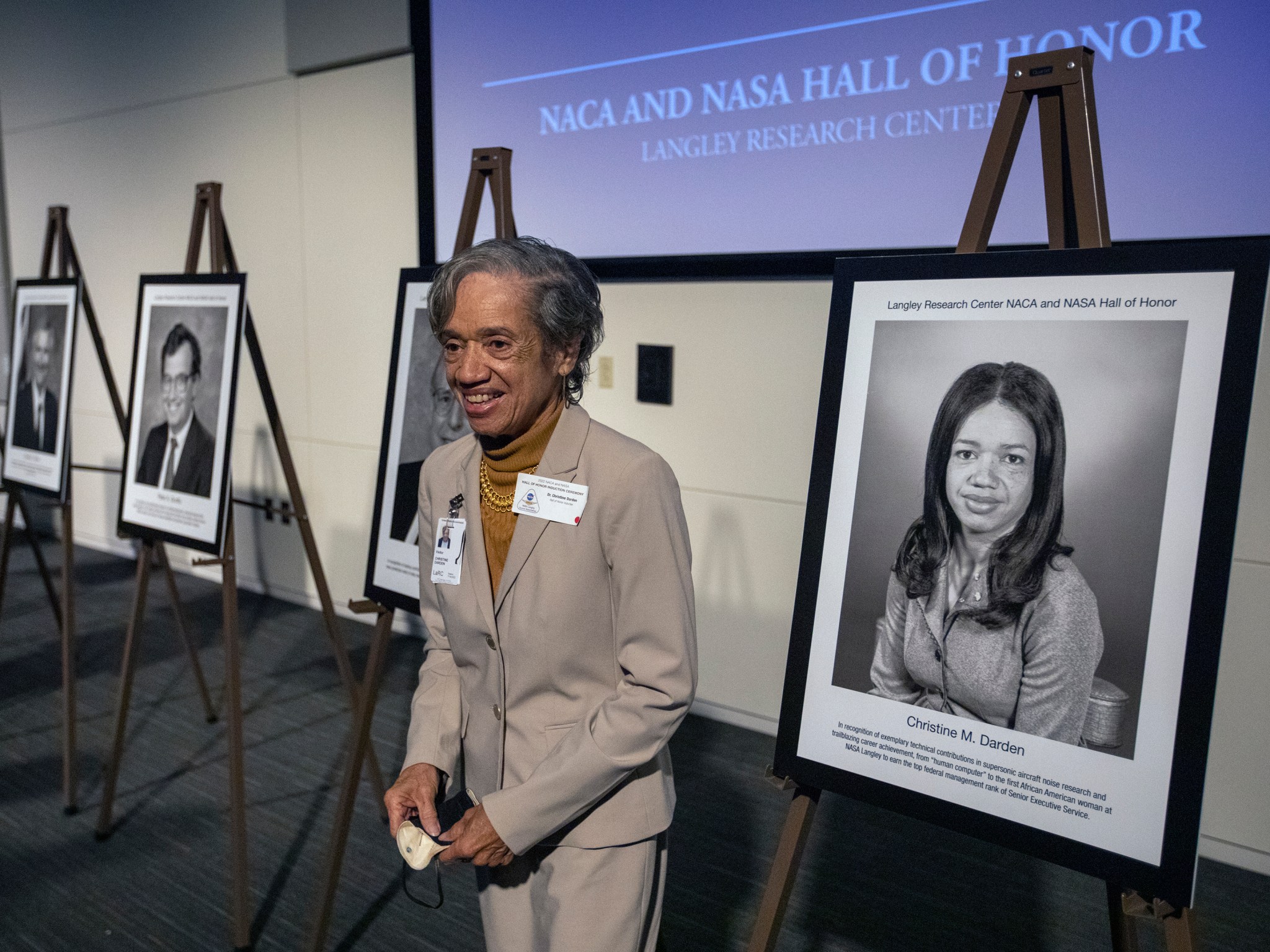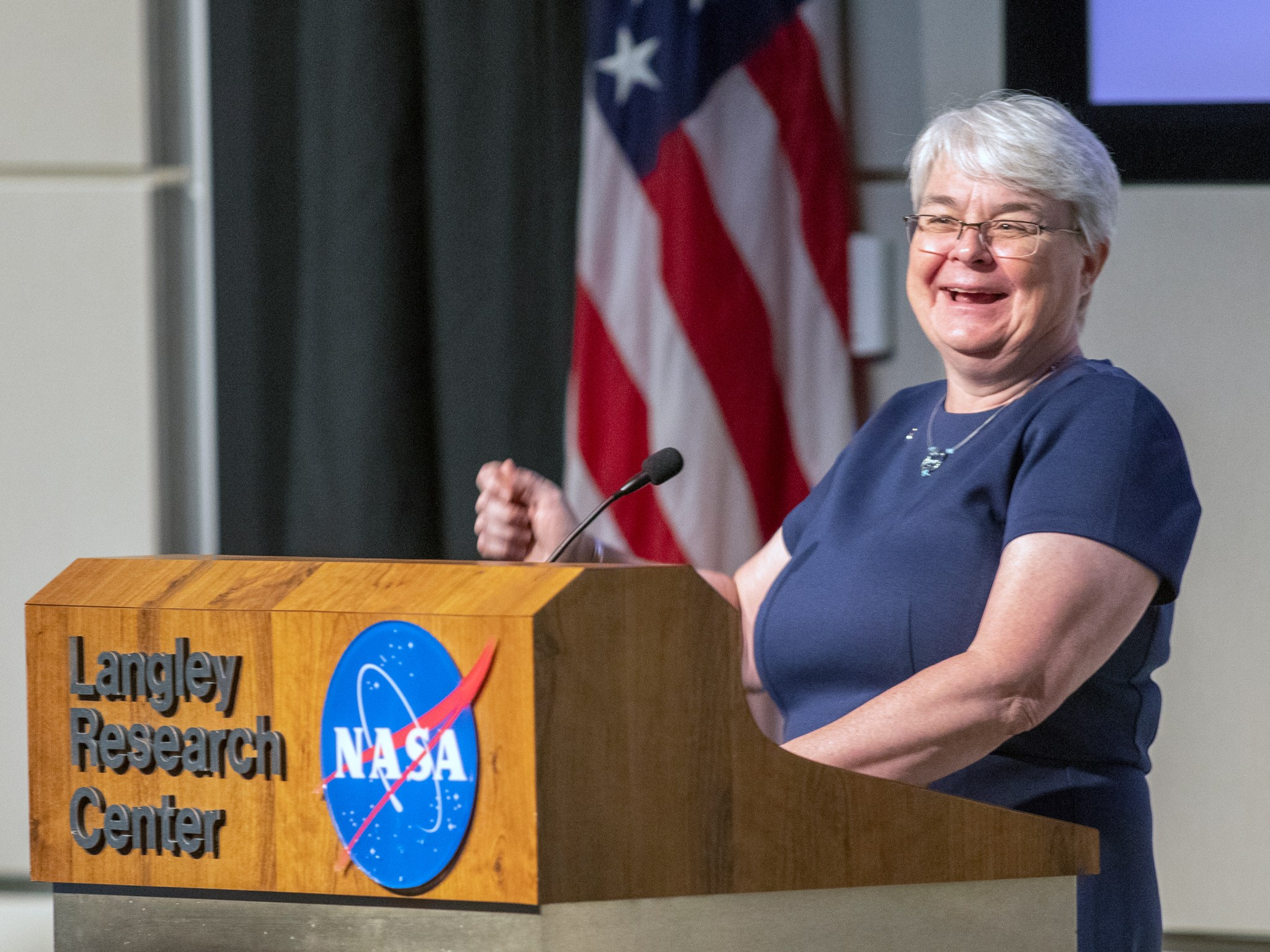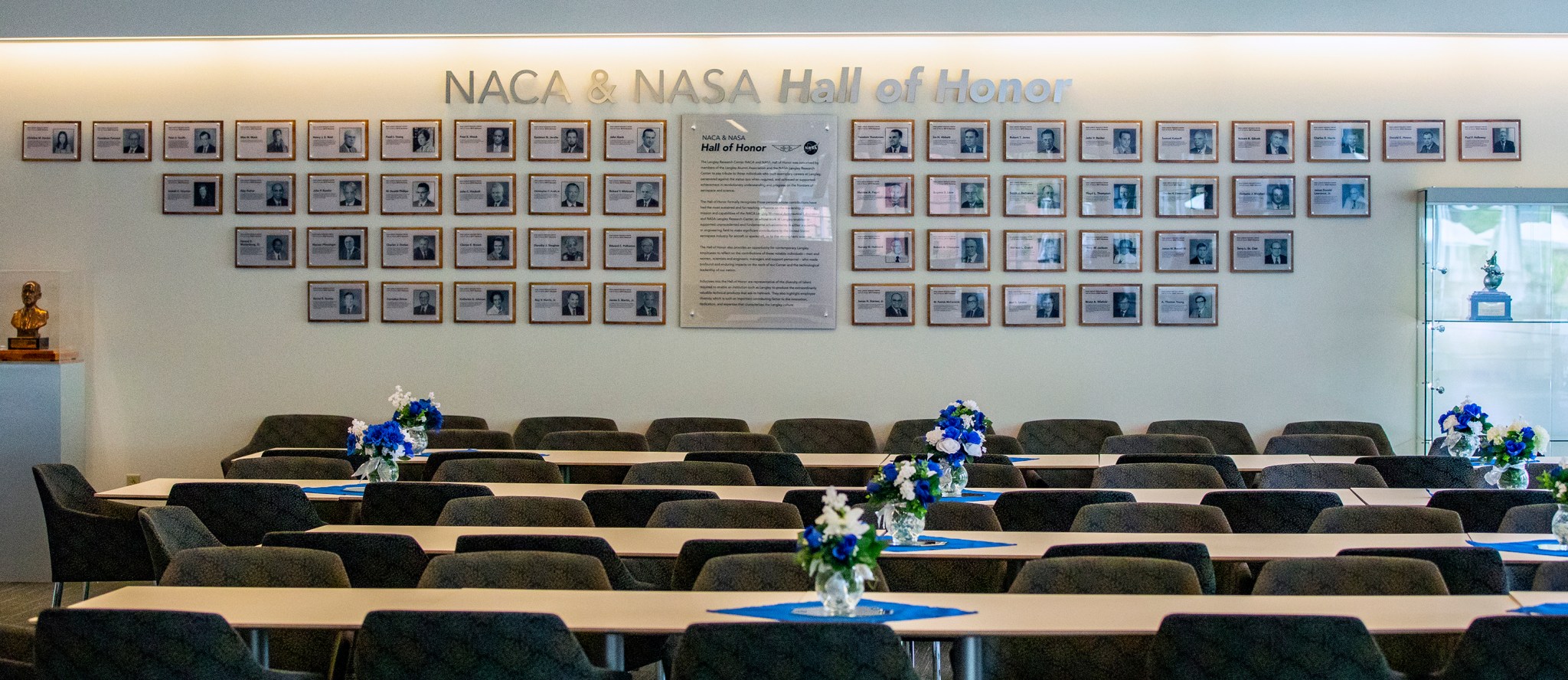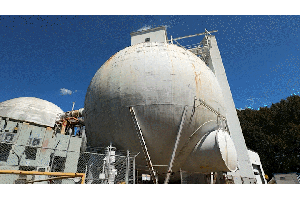Famed Hidden Figure Christine Darden was one of 17 members of the 2022 class of inductees to take their rightful place in the Langley Research Center NACA and NASA Hall of Honor – the third such ceremony to take place.
The ceremony, which was on July 14 at the Reid Center at NASA’s Langley Research Center in Hampton, Virginia, honors and formally recognizes the contributions of notable individuals – civil servants and contractors – at Langley who were instrumental in the successes of NASA and its predecessor, the National Advisory Committee for Aeronautics.
“We want to celebrate and honor the past,” said Langley Center Director Clayton Turner, “but we owe it to those we are celebrating to move farther and further into the future.”
The first Hall of Honor induction ceremony was held in 2015. That year, 19 people were honored as part of the celebration of the 100th anniversary of the NACA, which became NASA in 1958. Beginning with the second ceremony in 2017, which coincided with Langley’s 100th anniversary, the ceremonies are being held every five years.
Turner was effusive with praise for the inductees and their numerous contributions to Langley’s missions to advance humankind in the fields of science, aeronautics and space.
“These are talented, determined folks who arrived enthusiastic and got to work solving problems and answering tough complex questions,” he said.
Those words were echoed by the ceremony’s keynote speaker Deborah Douglas, the director of collections and curator of science and technology at the Massachusetts Institute of Technology Museum and a former visiting historian at Langley.
“Greatness is defined by service,” she said. “This class of honorees have done more than pursue big dreams. These are people who have given the very best of themselves to be of service to the nation and the betterment of humankind.”
The ceremony also coincided with Langley’s 105th-anniversary celebrations, which Turner said is a great time for reflection into the past to chart a brighter future.
“We are already five years into our second century of excellence,” he said.
The Hall of Honor was conceived by members of the Langley Alumni Association and NASA Langley as a way to pay tribute to individuals who built exemplary careers at Langley, persevered against the status quo when required, and achieved revolutionary scientific understanding and technological progress on the frontiers of the aerospace sciences.
“Langley is a special place,” Douglas said.
Below are the citations for the Hall of Honor class of 2022:
CHRISTINE M. DARDEN
In recognition of exemplary technical contributions in supersonic aircraft noise research and trailblazing career achievement, from “human computer” to the first African American woman at NASA Langley to earn the top federal management rank of Senior Executive Service.
FEREIDOUN FARASSAT
In recognition of lasting contributions in the field of aeroacoustics, specifically in the development of noise prediction tools to help make rotating blades and propellers quieter, and for his passion in sharing his knowledge through teaching.
PETER A. GNOFFO
In recognition of groundbreaking research in aerothermodynamics, especially advancing the understanding of the heating environment for spacecraft and other entry vehicles, helping improve NASA’s safety and success of human spaceflight and planetary exploration missions.
CHARLES E. HARRIS
In recognition of accomplishments as a visionary leader and strategist whose talents spanned structures and materials, aeronautics, NASA Langley’s current and future research needs, and spacecraft safety.
DONALD E. HEWES
In recognition of conception and development of inventive NASA Langley structures, such as the Lunar Landing Research Facility and Reduced Gravity Walking Simulator, that made it possible for humans to land and walk on the Moon.
JOSEPH S. HEYMAN
In recognition of innovative work as an inventor and leader in nondestructive ways to test aircraft and spacecraft materials and structures that helped make NASA Langley a nationally known nondestructive evaluation laboratory.
PAUL F. HOLLOWAY
In recognition of internationally recognized technical contributions in hypersonic aerodynamics and space vehicle entry-flight mechanics, significant contributions in the development of the space shuttle, and leadership as NASA Langley’s sixth center director.
AJAY KUMAR
In recognition of world-class leadership in the field of computational fluid dynamics, having introduced its use in the analysis and design of scramjet engines and hypersonic vehicles, and for leading strategic initiatives that improved Langley’s facilities and workforce.
JAMES DONALD LAWRENCE JR.
In recognition of exemplary leadership in early atmospheric science research that helped establish NASA Langley as a focal center for atmospheric environmental science and that for decades served as the blueprint of NASA’s environmental sciences programs.
DOMENIC J. MAGLIERI
In recognition of six decades of commitment to furthering the understanding of sonic booms, and for the successful accomplishment of research, development, and flight testing of sonic boom reduction concepts.
SAMUEL E. MASSENBERG SR.
In recognition of world-class leadership in the field of education, establishing the Langley Aerospace Research Summer Scholars program, which the Princeton Review called one of America’s top 100 internships, and development of Emmy Award-winning distance learning video programming.
WERNER PFENNINGER
In recognition of pioneering research and expertise in laminar flow control research and technology developments, and as an aircraft design visionary of a transonic truss-braced wing concept that can decrease fuel consumption and emissions.
JAMES M. RUSSELL III
In recognition of 60 years of Earth science discoveries that have led to measures to help save our planet, including the international Montreal Protocol treaty in 1987 designed to protect the Earth’s ozone layer.
TERRY L. ST. CLAIR
In recognition of groundbreaking inventions and innovations in materials and materials science that have had a lasting impact on NASA programs, the nation, and the world, including novel plastics and processes for aerospace applications.
DARREL R. TENNEY
In recognition of expertise that advanced lightweight materials and structures for improved aircraft performance, and for planning NASA’s basic research program in airframe systems that explored futuristic vehicle concepts, revolutionary technologies, and new research methods.
BRUCE A. WIELICKI
In recognition of 40 years of world-renowned climate science research in the role clouds play in the Earth’s radiative energy balance, and contributions as part of an international science team that developed United Nations climate change reports and earned the 2007 Nobel Peace Prize.
A. THOMAS YOUNG
In recognition of significant contributions in the early years of the space race, including leadership of highly successful NASA Langley projects to the Moon and Mars, and in top management positions at NASA Headquarters, two other NASA centers, and private industry.
- For more on the Langley Research Center NACA and NASA Hall of Honor, click here.
- To view a photo gallery of the ceremony, click here.
Eric Gillard
NASA Langley Research Center
































